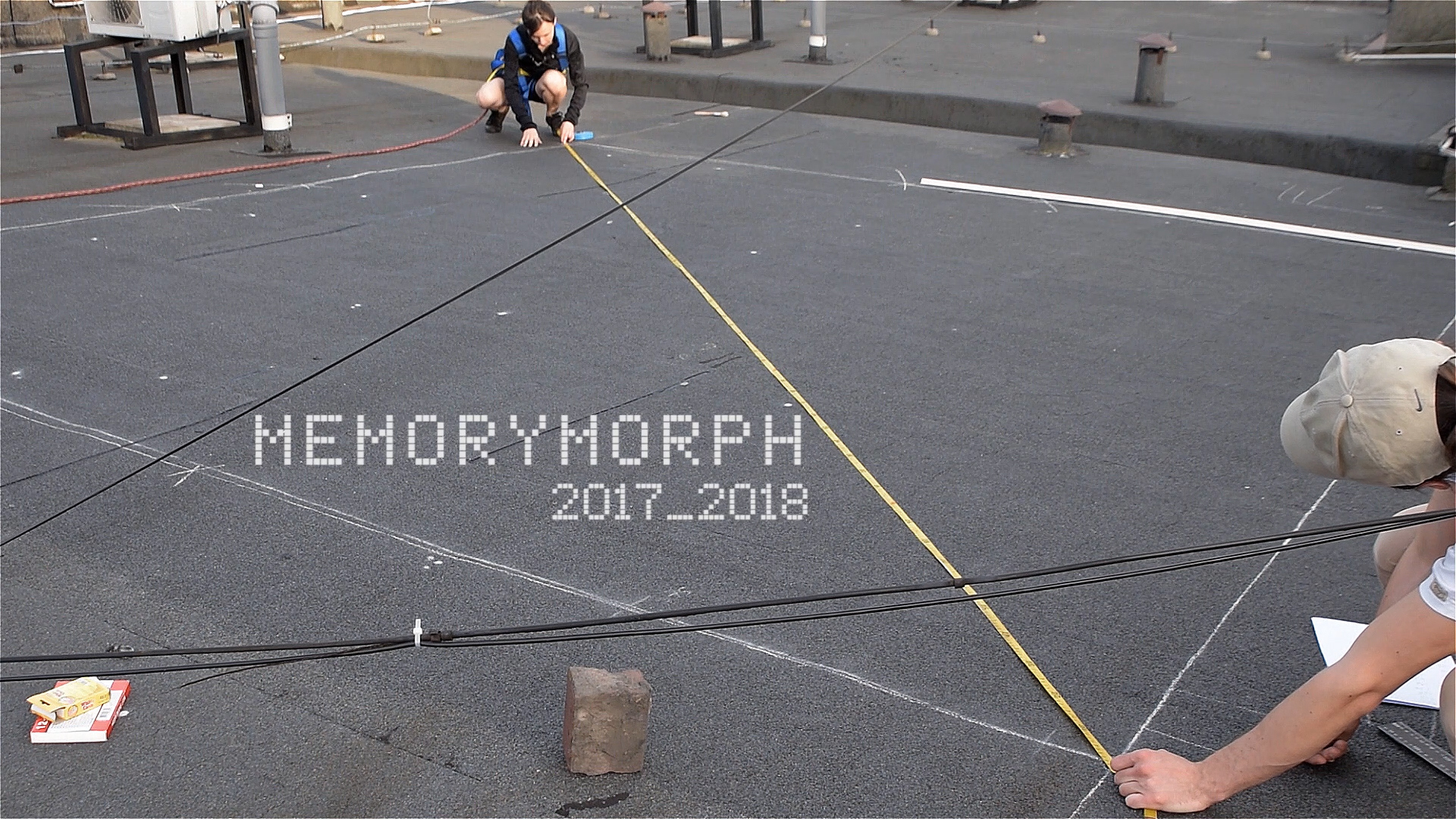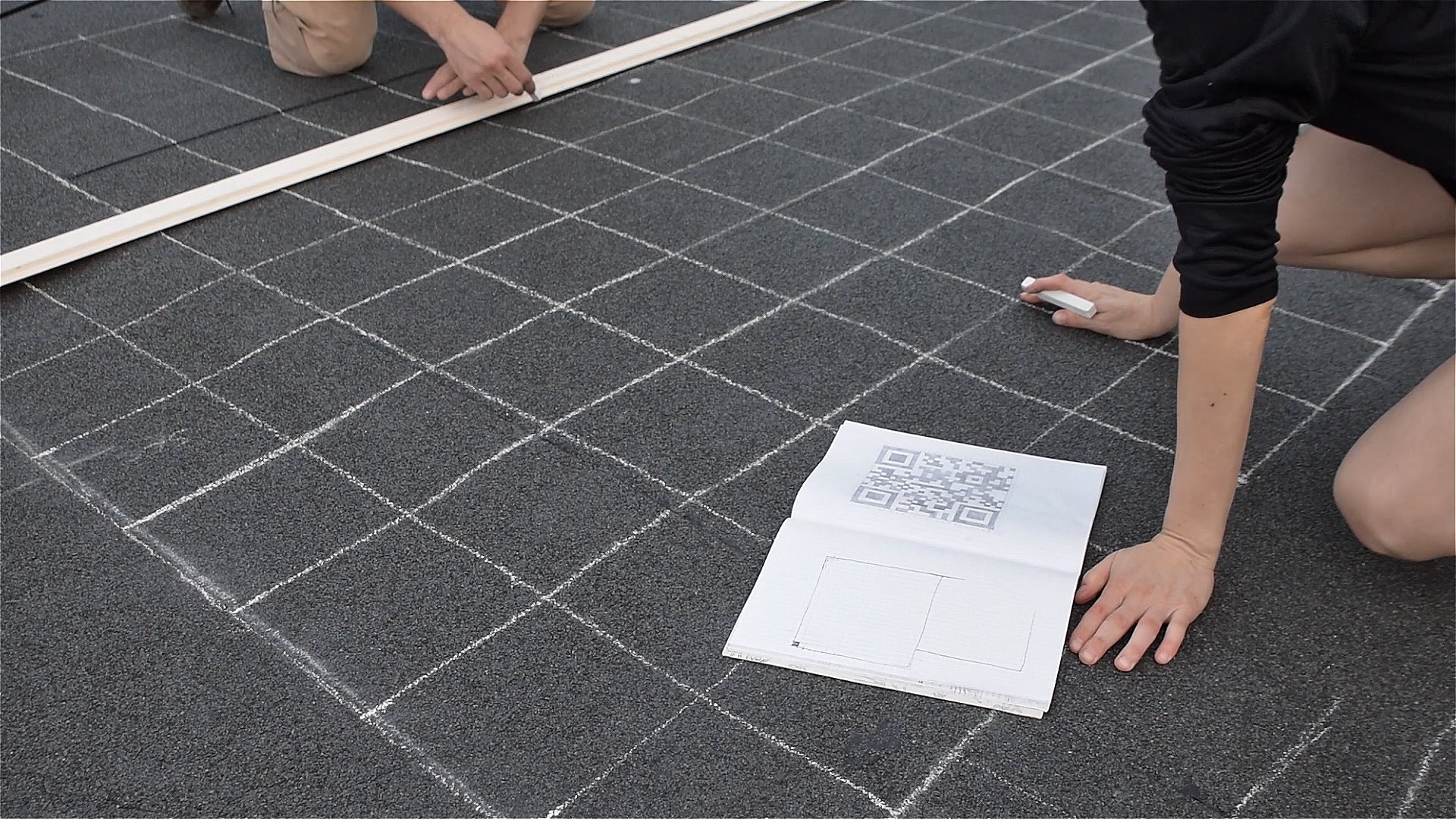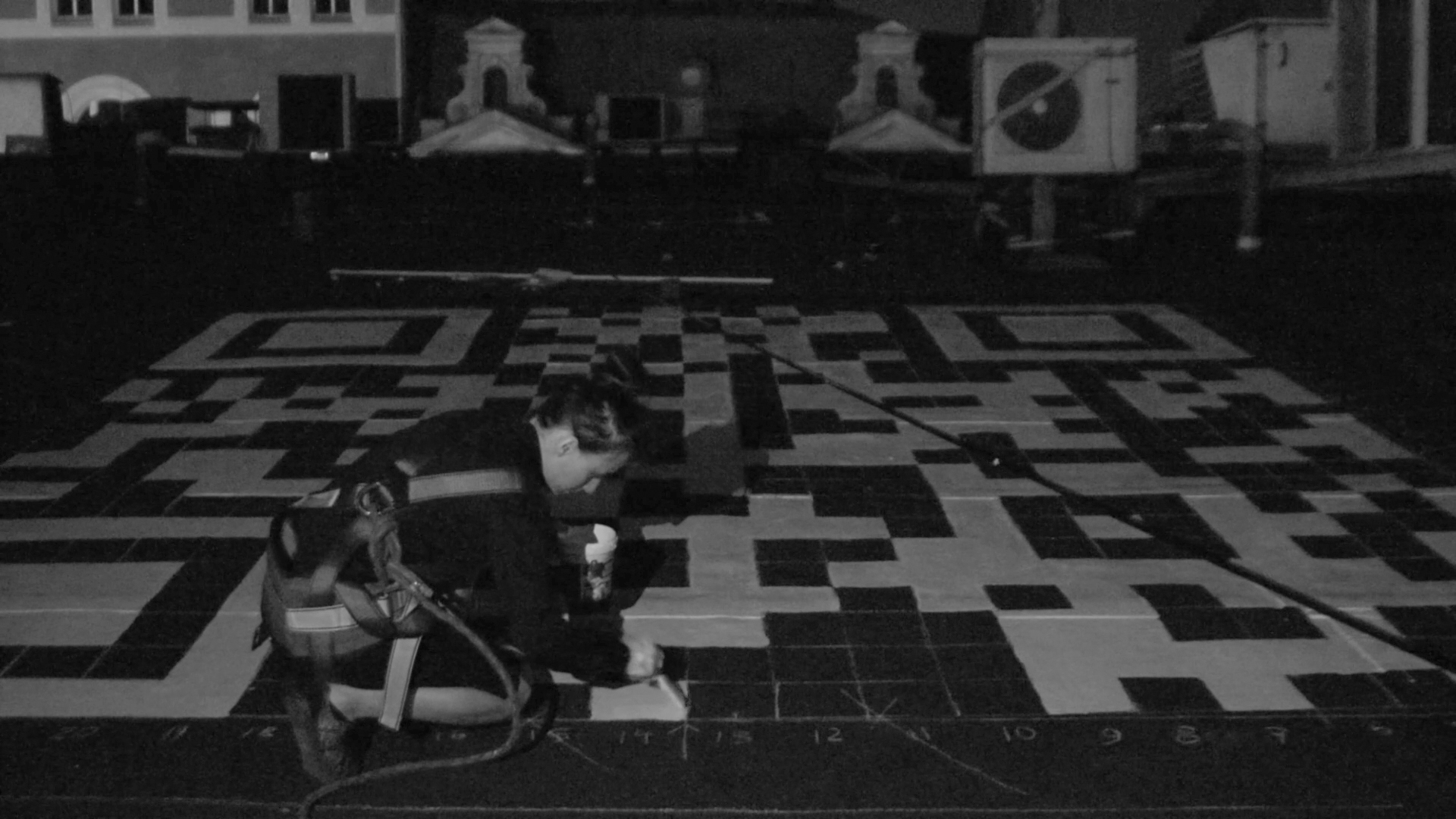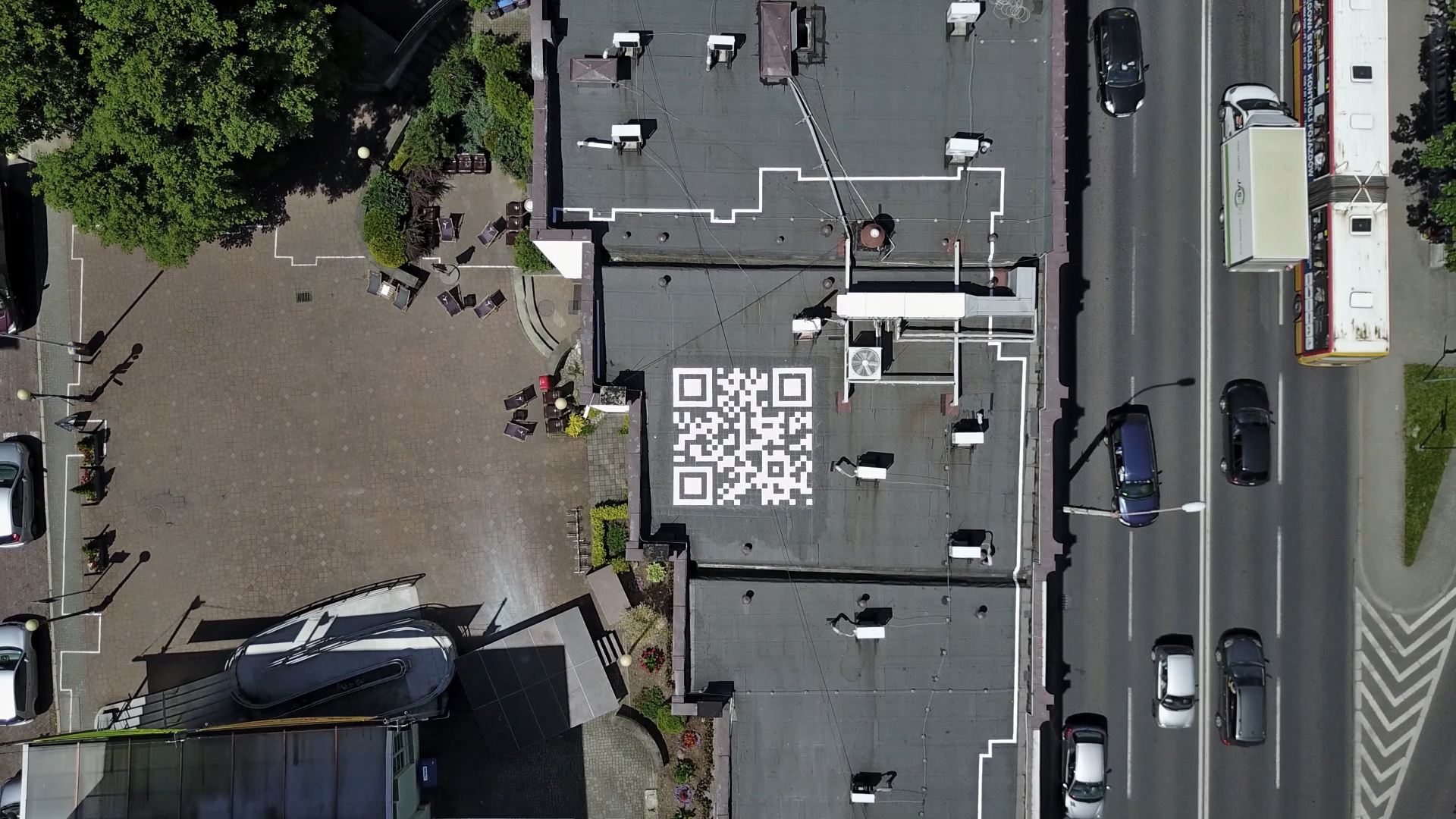TNCBH
- Date
- 2017–2018
- Type of object
- Sculpture / installation
- Technique
- site-specific installation, net-art, multimedia
- Dimensions
- zdjęcie w fotoramie: 34 x 60 [45 x 70]
- Date of acquisition
- 31.10.2023
- Catalogue no.
- 1150
- Additional information
TNCBH work by the artist collective Memorymorph [Małgorzata Łuczyna i Jacek Złoczowski]
components of the installation:
1). TNCBH, documentation – film documenting the project, 2017, full HD, 1:55, ed.1/4;2). TNCBH, video loop, film documenting the mural on the gallery roof – drone footage, 2017, FullHD quality film, loop duration 10 min, edition 1/4;
3). TNCBH, photograph documenting the project, 2017, digital print, varnished wooden frame, black colour, format 45x70cm, edition 1/4.
A project realised as part of a site-specific exhibition entitled TANCEBA in 2017 at Galeria Bielska BWA in Bielsko-Biała.





Description
The TNCBH project derives from the observation of urban space, where, due to historical changes, various contexts, meanings and architectural orders overlap. We use Google Street View app combined with 3D scanning, morphing techniques and site-specific installation.
The project was created for the site-specific exhibition TANCEBA realised in Galeria Bielska BWA (Bielsko-Biała, Poland) in 2017. The idea is based on the historical context of the place were the gallery is situated. The gallery building occupies the site of a former synagogue, which stood here from 1881 until September 1939, when it was destroyed by the Germans.
The title TANCEBA derives from the Hebrew ת.נ.צ.ב.ה [TNCBH] This is an abbreviation of a Jewish tombstone inscription, loosely translated as: Let his / her soul be preserved in the memory of the living. The exhibition was a kind of case study of the present-day art gallery. With its help, the artists explored the concept of building the identity of a place and the role of its historical context.
Interpretation
In the TNCBH project, we used the morphing technique, however used here based on incorrect data. The transformation was subjected to two completely separate and visually unsuitable 3D models: the BWA Gallery building in Bielsko-Biała and the synagogue in Szombathely, Hungary, whose architectural design was the archetype for the twin Jewish prayer house in Bielsko. Such a procedure caused that the graphic program was unable to interpret the data and correctly perform morphing operations. As a result of such a process, the gallery building was deformed, instead of being transformed to the shape of synagogue. This imperfect and deformed 3D model has been incorporated into the graphics used in the Google Street View application. The user of the application, walking virtually along the streets around the gallery, can become a witness to this gradual transformation or rather deformation of the building's body. The popular Google app becomes a field of confrontation of two blocks, two architectural orders and cultural symbols.
The final stage of the project is a QR code generated for the project website. The code was then painted on the roof of the Bielsko Gallery, thus in future, giving an opportunity for casual users of Google satellite maps to visit website and experience the TNCBH project.
Memorymorph
COOPERATION:
programming in Google Street View API: Grzegorz Łuczyna
Exhibitions
2017 – TANCEBA, Galeria Bielska BWA (11 maja 22 czerwca 2017).